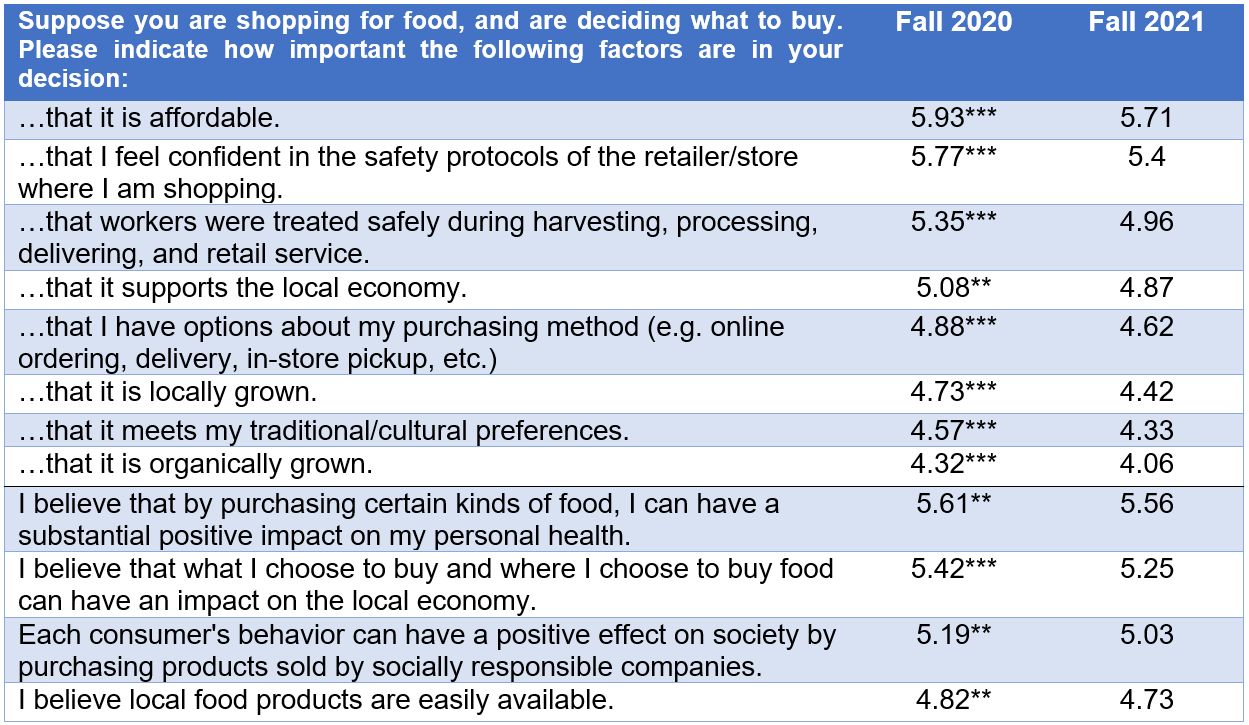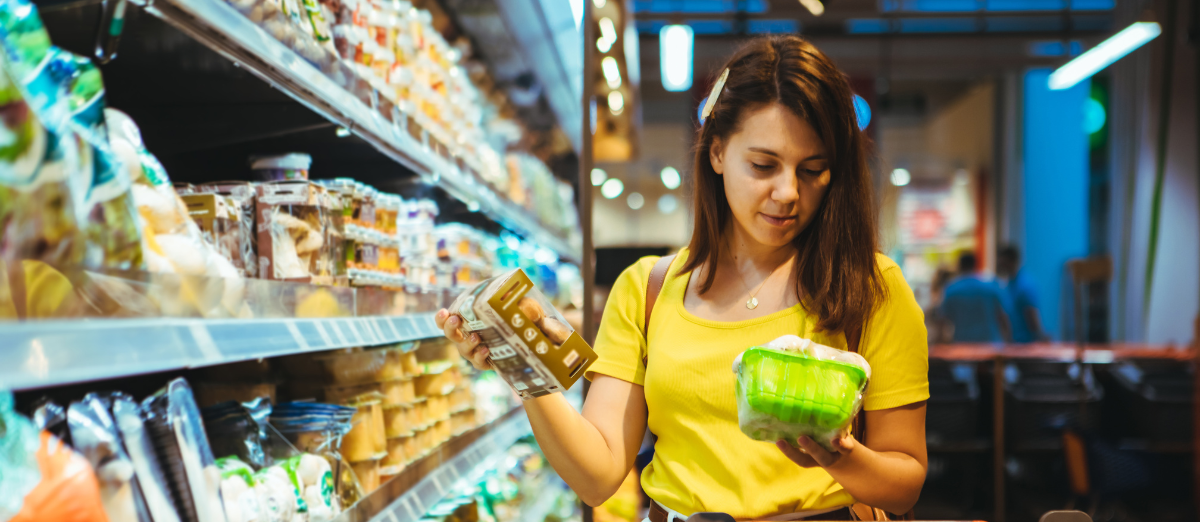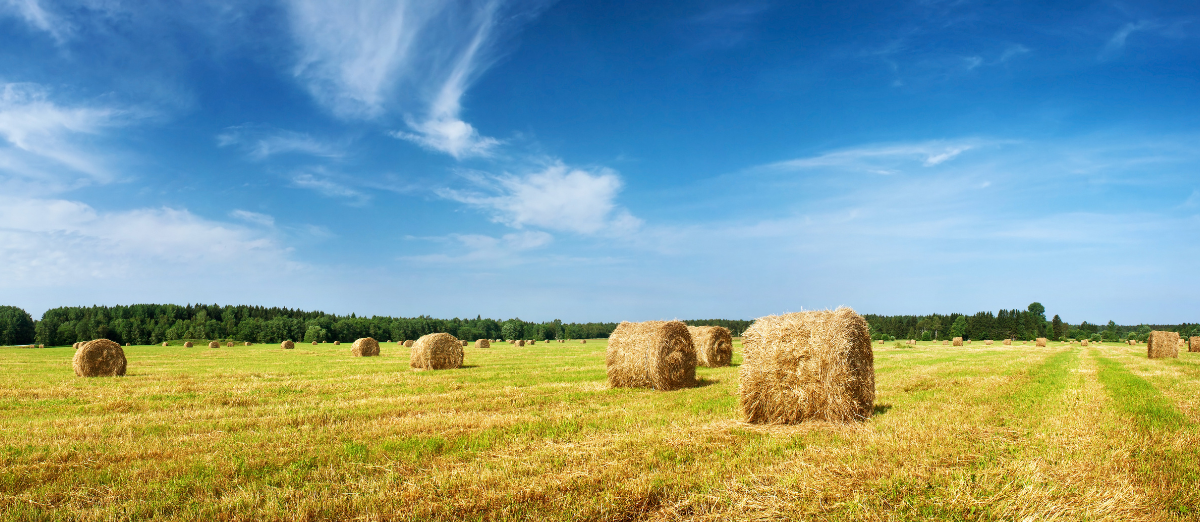Consumer Covid Crisis Edges Back – A Little
Author(s): Azita Varziri and Tim Woods
Published: July 29th, 2022
Shareable PDF
Covid represented a significant shock in 2020 to the U.S. food system as well as to consumer perceptions about food. While many consumers were forced to rethink where and how they sourced food, these sourcing options were also framed by values and perceptions consumers held about their food. Issues of affordability, safety, local food economies, and choice were measured against rapidly emerging options to source. On-line shopping, home delivery, and store pick-up options quickly became widely offered and, to a significant extent, have become a normal part of how consumers shop. To some extent, Covid accelerated shopping trends that already had been emerging.
There is some initial evidence that some of the initially acute demand and values driven by Covid around food have edged back, at least a little. Emergency conditions that shuttered restaurants and mandated masking and social distance have lessened. Covid-related concerns have also become somewhat less acute.
Two similar national consumer studies about food preferences and values were conducted with colleagues from Colorado State University. Not surprisingly, affordability and safety were among the leading factors choosing where to shop. Local sourcing and having options about purchasing were also important.
While the importance of some values has edged back slightly, so have some of the perceptions of evidence of affordability, worker safety and purchasing options – including access to local foods. Belief in how food choices can impact personal health and society also have edged downward.
We know that different consumer segments (income, urban-rural, race, etc) have felt these impacts differently. Research continues to help us better understand how Covid has disrupted our food system, and further, how we can continue to work toward creating a food system that is both resilient and high performing for our national food community.
Table 1: Food Purchase Perceptions and Values, 2020 vs. 2021

Note: Summaries from two national surveys conducted Fall 2020 (N=5,000) and again Fall 2021 (N=5010); Responses measured on a scale on 1 = ‘Not at all important’ to 7 = ‘Very important’ and the last 4 questions as 1 = ‘Strongly disagree’ to 7 = ‘Strongly agree’. Mean responses reported.
Recommended Citation Format:
Varziri, A. and T. Woods. "Consumer Covid Crisis Edges Back – A Little." Economic and Policy Update (22):7, Department of Agricultural Economics, University of Kentucky, July 29, 2022.
Author(s) Contact Information:
Azita Varziri | Ph.D. Graduate Student | azita.varziri@uky.edu
Tim Woods | Extension Professor | tim.woods@uky.edu
Recent Extension Articles
Hay Production Cost Increases in 2022 and Management Implications
Greg Halich | July 29th, 2022
Costs for hay production have skyrocketed in 2022. Fertilizer is driving the bulk of the overall increase, followed by fuel, and then general cost increases for other categories. While we can debate the exact causes of all these increases, we have a serious situation that needs to be understood and dealt with.
I Have This Farm, Now What?
Michael Forsythe | July 29th, 2022
What do I do with the farm I just bought? Although this sounds like a question that should be asked before you buy the farm, there may be circumstances that cause you to acquire a farm before deciding what to do with it. No matter the circumstance, deciding what to do with the farm requires careful consideration. In this article, we will look at several decisions that need to be made when purchasing or inheriting a farm.




